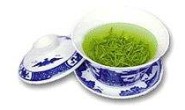Chinese tea culture is a traditional and integral part of Chinese society. It has a long history and has been developed and refined over thousands of years. Chinese tea culture is not only about drinking tea, but also about the art of tea-making, tea ceremonies, and the social and cultural significance of tea.
Tea is an important part of Chinese daily life and is often served to guests as a sign of hospitality. Chinese tea is also known for its health benefits, such as improving digestion, reducing stress, and promoting relaxation.
There are many different types of Chinese tea, each with its own unique flavor and aroma. Some of the most popular types of Chinese tea include green tea, black tea, oolong tea, and pu-erh tea.
In addition to drinking tea, Chinese tea culture also includes the art of tea-making and tea ceremonies. Tea-making is a highly skilled and precise process that involves selecting the right tea leaves, brewing the tea at the right temperature, and serving the tea in the right way.
Tea ceremonies are also an important part of Chinese tea culture. These ceremonies are often held to celebrate special occasions or to honor guests. They involve a series of rituals and traditions that are designed to create a peaceful and harmonious atmosphere.
Overall, Chinese tea culture is a rich and diverse tradition that has been passed down through generations. It is a reflection of Chinese history, philosophy, and way of life, and continues to be an important part of Chinese society today.
Chinese tea culture has a deep-rooted history that dates back to ancient times. The earliest records of tea drinking in China can be traced back to the Tang Dynasty (618-907 AD). During this time, tea was primarily consumed for its medicinal properties and was used to treat a variety of ailments.
Over time, tea drinking became more popular and began to take on a cultural significance. During the Song Dynasty (960-1279 AD), tea became a symbol of refinement and elegance, and tea ceremonies began to emerge as a way to showcase this cultural significance.
During the Ming Dynasty (1368-1644 AD), tea drinking became even more popular, and tea houses began to spring up throughout China. These tea houses served as social gathering places where people could come together to drink tea, play games, and socialize.
Today, Chinese tea culture continues to thrive and evolve. Tea is still an important part of Chinese daily life, and tea ceremonies are still held to celebrate special occasions and honor guests. In addition, Chinese tea has become popular around the world, and many people have come to appreciate the rich history and cultural significance of Chinese tea culture.



